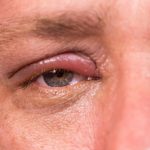This time around, our weekly health news roundup overviews a broad range of conditions, namely, shingles, ulcerative colitis, thyroid disease, hernia, and insomnia, along with related symptoms to look out for, information you need to know about treatments and recovery, and – something we don’t think about that often – the associated socioeconomic implications. You will find a detailed comparison of hypothyroidism and hyperthyroidism – with useful tips on living with these thyroid conditions, read about abdominal hernia recovery issues and potential treatment for inflammatory bowel disease, and learn about additional symptoms of herpes zoster as well as the toll untreated insomnia takes on the U.S.
 Hypothyroidism and hyperthyroidism symptoms, living with thyroid diseases
Hypothyroidism and hyperthyroidism symptoms, living with thyroid diseases
Hypothyroidism and hyperthyroidism are two common forms of thyroid diseases, which – if left unmanaged – can make daily living quite challenging. Hypothyroidism is also known as an underactive thyroid, meaning the thyroid doesn’t produce enough hormones, thus slowing down bodily functions. In hyperthyroidism – overactive thyroid – the thyroid overproduces thyroid hormones, which in turn speed up bodily functions.
Advertisement
Hypothyroidism is a long-term health problem that needs to be managed throughout a person’s life. In hyperthyroidism, some cases may be temporary if they are a result of pregnancy or an autoimmune disease known as Grave’s disease, which does not have a cure.
Although both conditions affect the thyroid, they are two different diseases and so it’s important to understand their differences. Continue reading…
 Shingles (herpes zoster) eye infection may cause blurry vision, swollen eyelids
Shingles (herpes zoster) eye infection may cause blurry vision, swollen eyelids
Herpes zoster, which is commonly known as shingles, causes painful blisters near the nerves on one side of your body, but what many people don’t realize is that it can also cause damage to your eyes, including eye infection, blurry vision, and swollen eyelids.
If you haven’t had chickenpox then you can’t get herpes zoster, but if you have had chickenpox, it is a possibility. Herpes zoster or shingles is, in fact, a virus. Early diagnosis can reduce the risk of complications such as eye infection, blurry vision, and swollen eyelids.
A herpes zoster eye infection can be unpleasant, so catching it early and getting treatment is always preferable. In the early stages of a herpes zoster eye infection, a person might feel a sharp stabbing pain or possibly an itching or burning sensation in the forehead, eyelid, or even the sides of the nose. A fever, headache, and chills may also be experienced early on. Three to five days later, blisters may appear on the forehead or inside the eyelids and tip of nose. Continue reading…
 Abdominal hernia repair recovery takes longer than expected, especially in women
Abdominal hernia repair recovery takes longer than expected, especially in women
Abdominal hernia repair recovery has been found to take longer than expected, especially in women. The findings from the Mayo Clinic suggest that patients should be able to quickly return to their normal activities following an abdominal hernia repair, but many patients still experience pain and fatigue up to several days after the surgery. Furthermore, individuals under the age of 60 and women were found to have longer recoveries.
Senior author Juliane Bingener-Casey said, “Physicians may need to work with patients to set more realistic expectations about recovery and help them better cope with pain and fatigue after the procedure. It may be that people expect, when they’ve seen their neighbors after laparoscopic gall bladder surgery and they’re back taking a walk the next day that they’ll be able to do the same thing with laparoscopic ventral hernia repair. They will probably find out that it takes several days before they start moving the way they usually do.”
Laparoscopic ventral hernia repair is performed when a gap forms in-between the muscles in the abdomen. It is the most common form of surgery for an abdominal surgery with 90,000 ventral hernia repairs occurring annually in the U.S. alone. Continue reading…
 Ulcerative colitis, inflammatory bowel disease treatment with vinegar has potential: Study
Ulcerative colitis, inflammatory bowel disease treatment with vinegar has potential: Study
Ulcerative colitis – inflammatory bowel disease – treatment may be possible with vinegar. The findings were published in American Chemical Society’s Journal of Agricultural and Food Chemistry revealing the benefits of vinegar in helping to fight ulcerative colitis. Vinegar may benefit ulcerative colitis due to its impact on the gut microbiome, and researchers found that vinegar suppressed inflammation-causing proteins all the while improving the gut’s bacterial makeup as seen in mice models.
The researchers tested vinegar and its main ingredient – acetic acid – in a mouse model of ulcerative colitis. The mice were given vinegar in their drinking water which was found to greatly improve symptoms related to ulcerative colitis. Stool sample analysis showed higher levels of good bacteria and lower levels of proteins that promoted damaging inflammation in the gut.
The researchers point out that additional research is required to determine vinegar’s effects in humans with ulcerative colitis, but so far the studies available do show promise. Continue reading…
 Untreated insomnia costs the U.S. $100 billion a year
Untreated insomnia costs the U.S. $100 billion a year
Advertisement
Insomnia is an expensive sleep disorder, costing the U.S. $100 billion for those who are untreated. The researchers of the study suggest providing drug and behavioral therapy treatments for those who have untreated insomnia could lead to significant health care savings.
Nearly one in five Americans have difficulties falling or staying asleep. The researchers reviewed previous research to come up with their estimate of how much insomnia costs. Their estimates range from $28 billion to $216 billion based on insomnia’s toll on workplace performance, high accident rates, and greater use of health care services.
There are effective insomnia treatments available, but sadly many sufferers of insomnia do not receive the treatment they require in order to get the sleep they need. Continue reading…
